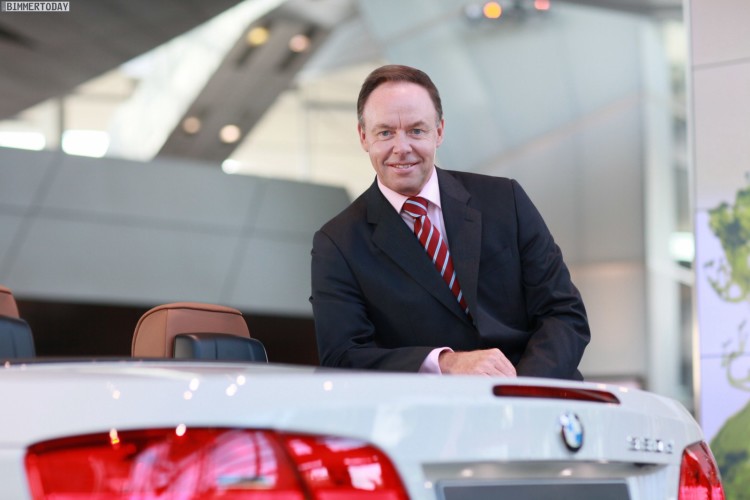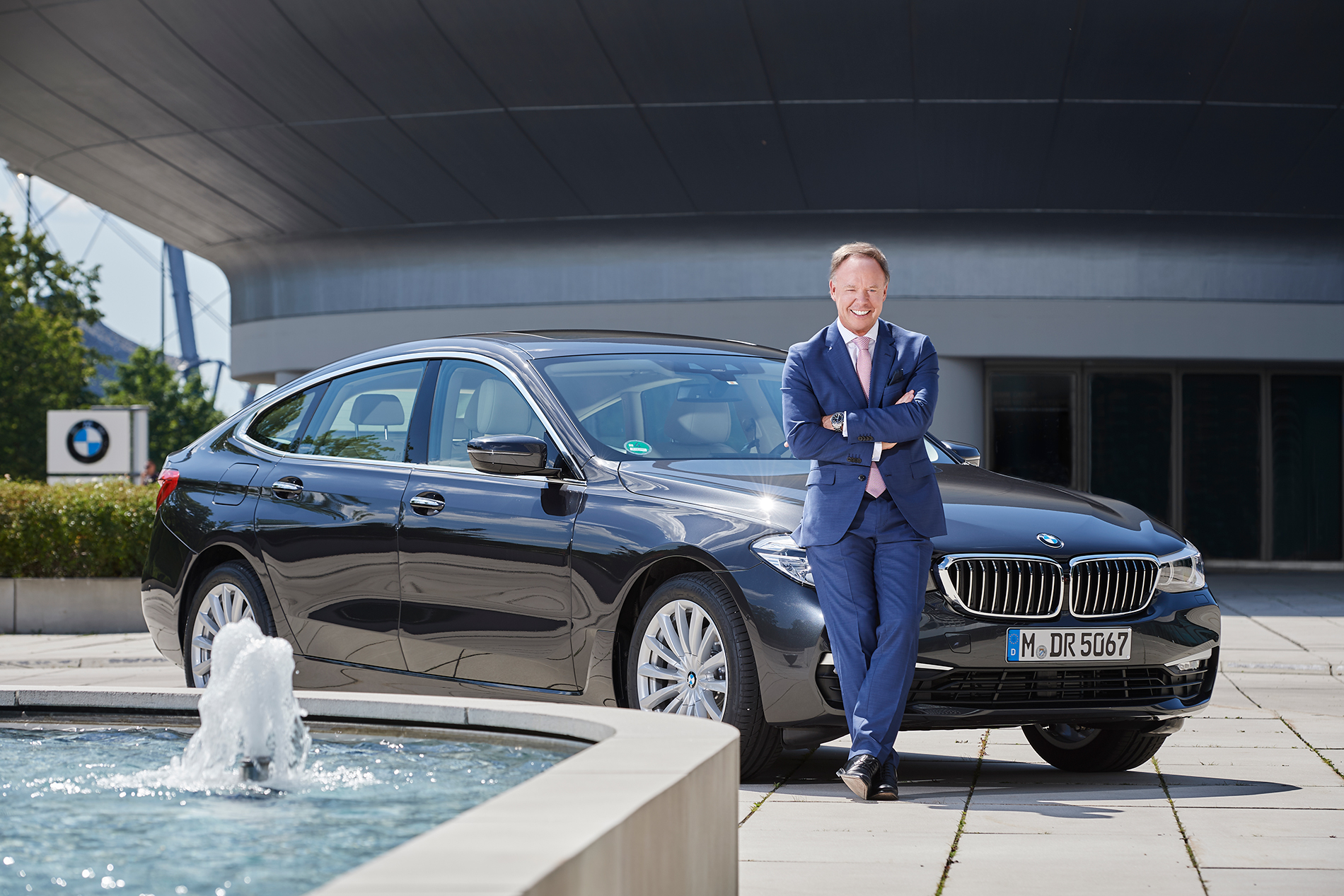Ian Robertson, Member of the Board of Management of Sales, will soon be retiring from BMW but not without leaving a lasting memory of an incredibly successful career. Robertson has been hugely influential to the brand’s success, having helped launch the i Division sub-brand as well as Rolls Royce. But it’s not just the financial success that he’s brought to BMW that will be missed when he’s gone, it’s his wisdom and experience. Auto Express recently sat down with him to find out why.
Robertson started his career off by turning down a job right out of University. “I lived on the coast in North Wales and had a very strong interest in the sea,” Robertson told Auto Express. “I had it in my mind that the sea would play a big part in where I wanted to go. But at the same time I had a big passion for cars. I was destined to go to Kuwait with a job offer all sorted, then I thought ‘I don’t want to do this’ so applied for jobs in the car industry.”

His first job was with Austin Morris, which might give some British car enthusiasts a chuckle, as Austin Morris wasn’t well known for its quality or reliability. He started off in purchasing, helping to run such things as the paint shops and assembly lines, but then moved into manufacturing with SU Butec, a company that made carburetors for British Leyland. He was then brought back to purchasing, which is where his life started to really take off, even getting his first company car.
“I had a red Rover SD1 – my first ‘big car’,” said Robertson. “This was all in 1985 – the year I got married and bought my first house. It was a big year and a good time – I was responsible for purchasing for all the production plants.
It’s also where Robertson’s improvisation and quick thinking developed, which became quite useful in years to come. A problem with the Austin Maestro caused Robertson to think on his feet to solve the problem. “We couldn’t get the inner and outer parts of the bumper to stick together,” Robertson told AE. “The fix involved creating a jig, made on a Sunday afternoon, that had hosepipes in it that when you inflated with air, it pushed the thing together and sealed it.” He also once carried fuel hoses from Finland back to the UK in his luggage to solve a last minute problem.
After showing his talents, he was made Managing Director of Land Rover, which was owned by British Leyland at the time. During his time with Land Rover, BMW purchased the company, which brought Robertson to Munich and gave him a taste of proper manufacturing. He never looked back.

“I remember going to Munich and my first board meeting to discuss Freelander,” he said. “That car was an idea we’d had two-and-a-half years earlier, but we had no money. I’d been in discussions in Finland with the Government, which was going to fund Freelander. The deal was we’d provide the engineering, but they’d make it in Finland. Then BMW came along and asked how much it would cost, which was a fraction of what the expected cost was. I went to the board and they agreed that we needed a new paint plant, a new assembly hall, a new body in white structure – the numbers were quite significant. There was more money on the table that day than in the previous 50 years of Land Rover investment.”
The stark contrast between manufacturing quality between BMW and British Leyland really impressed Robertson. “You could go around any BMW plant anywhere in the world and they have a standard operating procedure and philosophy of robust manufacturing. And they continue to invest in it. If I was to go around many factories in the UK at the time, you’d see leaking roofs and equipment that was out of date and so on. Therefore it never really delivered – they never quite cracked some of the complex manufacturing techniques, while BMW had a deep understanding of that. When we built under the new [BMW] philosophy, we made massive progress. At BMW we are extremely good at analyzing things in the deepest sense, to make sure we avoid the risk of failure – we’re really good at that.”
Then in 1999, Robertson moved to BMW South Africa, to help expand the brand. There, he met one of the most important and influential people in our lifetime, Nelson Mandela. “Back then there was a feeling in the country that anything was possible,” Robertson told AE. “Nelson Mandela had been in power for three or four years – he was an icon. Just when I started I was taken to a dinner of business leaders to celebrate Mandela’s birthday – and he was coming. I’m thinking ‘I can’t believe this is happening’ and sure enough I was introduced to him.”

Over time, Robertson and Mandela actually became good friends, and the famous South African president became a huge influence on Robertson’s life. “I had many times when I just had a cup of tea with him and he’s such a wise guy. Considering his difficult time in prison and oppression and apartheid, he was so optimistic and looking forward.” They were so close, in fact, that Robertson was invited to Mandela’s funeral.
After a brief stint in South Africa, Robertson was brought back to the UK to head up Rolls Royce, where the seventh-gen Phantom had already been launched but had underwhelming sales. It’s there that Robertson thought of the Phantom Drophead Coupe, a car that helped give Rolls Royce a shot in the arm. “Phantom was slow progress, but the Drophead was an exciting, emotionally-driven product. It makes you feel good and it made the people in the plant feel good. It brought a level of emotion and the car really took off – as did the mood in the company, the belief and the Phantom took off, too.” said Robertson.

But Robertson’s biggest influence to BMW, even after over a decade of increasing BMW’s sales and helping the brand become the most successful premium brand in the industry, was probably the i Division. “The i brand was conceived two-and-a-half years before we launched the product,” said Robertson. “And that took up a lot of my time. Initially i3 was the car – the megacity car – but we had a view that we needed to make electromobility exciting and emotional, so i8 was always in the background. We had the two bookends – the rational urban car and the emotional performance car.”
While he’s retiring from BMW, he won’t be retiring completely and after reading about the work he’s done in his life, it’s not hard to see why. His wisdom and talents can and will be taken elsewhere, where he can make big differences, whether it be in the automotive industry, the tech industry or even government. Robertson’s contributions to BMW won’t be forgotten, as he’s left a lasting mark on both the brand and the industry.
[Source: Auto Express]





































































